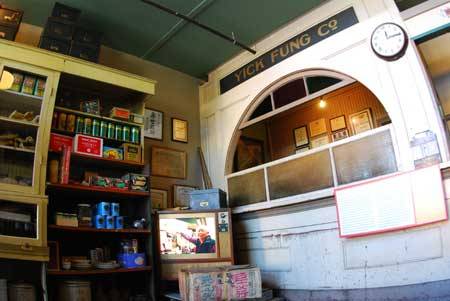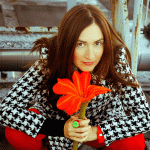Con Edison Immigrant Artist Program Newsletter, Issue No. 46
Featured Organization: The Wing Luke Museum of the Asian Pacific American Experience
Located in Seattle’s Chinatown-International District, The Wing Luke Museum of the Asian Pacific American Experience is the only pan-Asian Pacific American museum in the nation. NYFA interviewed Marketing Associate Marites L. Mendoza about the variety of their programs and how artists can get involved with them.
NYFA: The Wing Luke Museum of the Asian Pacific American Experience was named after Wing Luke, the first Asian American to hold elected office in the Pacific Northwest. Can you talk about the relationship of his story to The Wing’s mission and programs?
MM: The influence of Wing Luke’s life, values and work is evident in everything we do. Elected to Seattle City Council in 1962, he was passionate about social justice and historical and cultural preservation. It’s due in part to his efforts that Seattle’s iconic Pike Place Market was saved from demolition in 1964. He was also instrumental in fighting discriminatory practices in the selling and renting of real estate in the city. Wing Luke died tragically in a plane crash in 1965, but funds from search and rescue efforts were used to seed the museum, established to honor his legacy.
Since then, we’ve strived to carry on Wing Luke’s commitment to bridging communities. Since our founding in 1967, The Wing has been located in Seattle’s Chinatown-International District, a community that continues to be at the heart of our mission to share the unique experiences of Asian Pacific Americans. Not only do we offer tours of the neighborhood and our historic building, but our rotating exhibitions also engage issues and art at the forefront of our community today. These include our current exhibitions Uprooted and Invisible: Asian American Homelessness, which was created hand-in-hand with impacted community members and service providers, and Under My Skin: Artists Explore Race in the 21st Century, which features work by 26 artists from diverse backgrounds, including Asian Pacific Americans and beyond.
NYFA: The Wing is located in Seattle’s historical Chinatown-International District. How have the different cultures represented in this neighborhood affected the museum’s programming? Has The Wing helped the neighborhood retain its socio-historical significance, even now in the 21st century?
MM: The Wing is the only pan-Asian Pacific American museum in the nation, so it is only fitting that we’ve made a home in Seattle’s Chinatown-International District, a neighborhood that likewise has brought together diverse cultures and includes Seattle’s Chinatown, Japantown and Little Saigon, all in one. The Chinatown-International District is one of the oldest neighborhoods in Seattle. It has incredibly rich, authentic historic and cultural assets to build upon, and yet it also continues to struggle, being one of the lowest income areas in the city with a high concentration of vacant and underutilized buildings and also subject to the harsh impacts of numerous public construction projects.
Our future is intricately connected with the future of our neighborhood, and we strive to make sure that our programming and efforts contribute to the neighborhood’s revitalization, affirming the area’s history and culture and supporting its many small, family owned businesses. Completed in 2008, the renovation of our current home, the East Kong Yick building, was itself an effort to preserve an essential part of Asian Pacific American history and re-energize the original core of Chinatown. A group of 170 Chinese immigrant investors constructed the building in 1910, making it one of the first to be built in the neighborhood. We share this history daily in the tours we offer of the neighborhood and of the preserved hotel that once served as home for Seattle’s early Asian immigrants. At the same time, we included contemporary galleries and gathering spaces to connect these pioneer stories with current and future generations.
In addition to our tours and exhibitions, we offer visitors other ways to explore, learn about and connect with the historic and cultural assets in our neighborhood. Admission to the museum is an all-day pass so visitors can pair a trip to the museum with shopping and eating at nearby businesses. We also produce a summer music, art and performance festival called JamFest, which is held at venues and public spaces throughout the Chinatown-International District, and Holiday Shop-O-Rama aimed at attracting customers to neighborhood shops, and we are currently working on the Higo Garden project to reactivate a historic outdoor space in Japantown.
NYFA: I was intrigued by your current exhibit, “Honoring Our Journey” and the universality of the themes that this exhibit explores. So many immigrants, although coming from different backgrounds, encounter and deal with the same everyday struggles. Can you talk about the exhibition and how these artists were chosen?
MM: “Honoring Our Journey” is one of our permanent exhibitions, and shares the particular experiences of the sub-groups who are included in the umbrella term Asian Pacific American. As with all of our exhibitions, “Honoring Our Journey” came together through the efforts of our community-based exhibition process, a model aimed at empowering community members to tell their stories on their own terms. In this approach, each exhibition is created by a Community Advisory Committee (CAC), made up of everyday community members from diverse backgrounds and ages that have some connection with the exhibition topic. These volunteers meet for 1-2 years, determine the exhibition’s main messages, themes, storyline, look and feel and design, and connect us with even more community members who contribute to the exhibition by sharing personal photographs, artifacts, mementoes or oral histories. For “Honoring Our Journey,” our CAC honed in on the epic Asian Pacific American immigrant story, which really reflects what it means to be American – carrying culture and traditions from your homeland, leaving one nation to come to another, making a living once here, facing challenges including racism and discrimination and yet responding with strength, and building community anew.
NYFA: What’s the first step someone should to take in order to become involved with The Wing? What opportunities does The Wing offer for immigrant artists? For members of the community? For visitors?
MM: The first step for anyone interested in The Wing is to visit the museum and take a guided tour, especially our Museum Experience tour, which takes visitors through our preserved historic hotel and the Yick Fung Company store. They can then stay connected with us by becoming a member, signing up for email updates, or keeping up with us on social media.
For those who would like to be involved more closely with our programming, we always welcome volunteers. We rely on community members to serve on CACs for exhibitions. Other opportunities range from serving as gallery guides to transcribing oral histories to volunteering at our annual gala. Finally, we love to hear and preserve stories, and we maintain an oral history lab as part of our Governor Gary Locke Library and Community Heritage Center for that purpose.
We are always looking to connect with other artists, whether to participate in our monthly family art workshops, serve as an advisor for an upcoming exhibition in our George Tsutakawa Art Gallery, work with our out-of-school middle school and high school youth programs, or contribute to upcoming exhibitions. Each fall we host Mix-It-Up, a reception for artists and an opportunity for them to network with other Asian Pacific American artists, curators and other arts professionals. This is a great opportunity for us to get to know one another better. Check back at our website’sevents page for more information as the fall draws nearer. We also have information on our website about how to propose future exhibitions.
NYFA: This summer you’re hosting your annual summer Jamfest on the third Thursdays of June, July, and August. What should visitors expect at this year’s festival? How can artists get involved in the future?
MM: This year we’re building on the success of JamFest by adding even more performers and venues in our neighborhood. Attendees have told us how much they love the gatherings in our adjacent historic Canton Alley, so visitors can expect visual art, food and pop-up shops in that space. We’re excited to have the Asian Pacific American rock group The Slants performing an outdoor set in July. In addition to our music and art offerings, we’re kicking off each evening with a variety show at the museum featuring burlesque, juggling, acrobats and a magician. The full line-up and details can be found on the JamFest website.
We’re always looking for musicians, artists and performers for JamFest. Information about getting involved can be found here.

NYFA: Congratulations on the recent designation of Federal Status from the National Park Service. What does this honor mean to the museum and to the community? Are there any benefits that you hope will come from the new designation?
MM: First and foremost, our National Park Service designation would not have been possible without the multi-pronged effort by our supporters, to whom we are deeply indebted. That our champions range from local community members to political officials is a testament to the importance of the stories we share. We’re in rarified company with only four other Asian American sites in the National Park Service. Among these sites, The Wing is the only site that highlights Asian Pacific American experiences broadly, due to the waves of Asian immigrants from different cultures who have lived and passed through our building and neighborhood in the past century and our efforts to share all of their stories through our work.
Being an Affiliated Area of the National Park Service does not entail direct financial government support, but we hope it will spark new visitors, new partnerships within the National Park Service, and opportunities to make a bigger impact nationwide, leading to future funding opportunities.
For more information on The Wing, please visit its website.
For more information about NYFA’s Immigrant Artist Program, visit nyfa.org/learning.
Click here to sign up for the Monthly Immigrant Artist Program Newsletter, made possible through the generosity of Con Edison.



